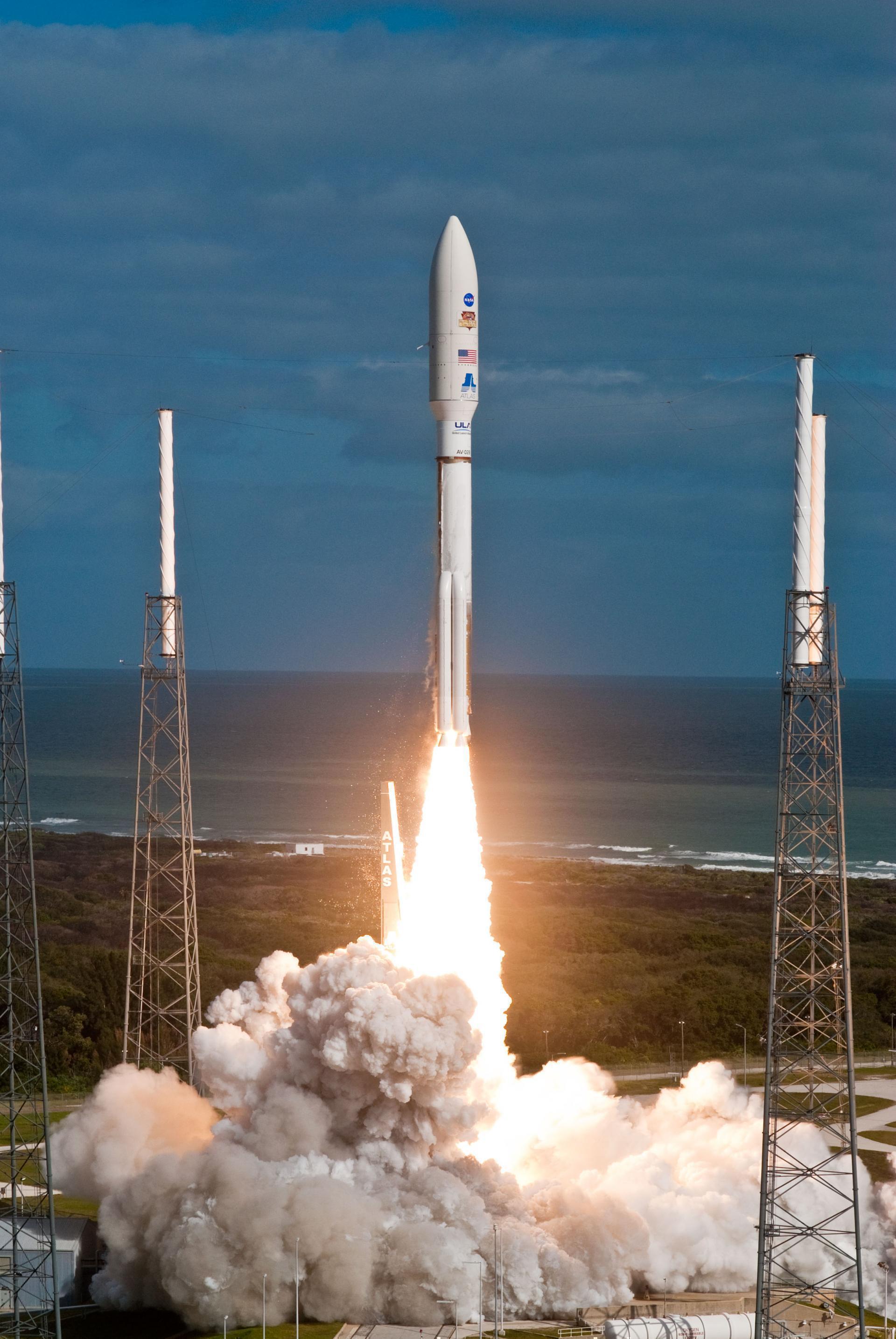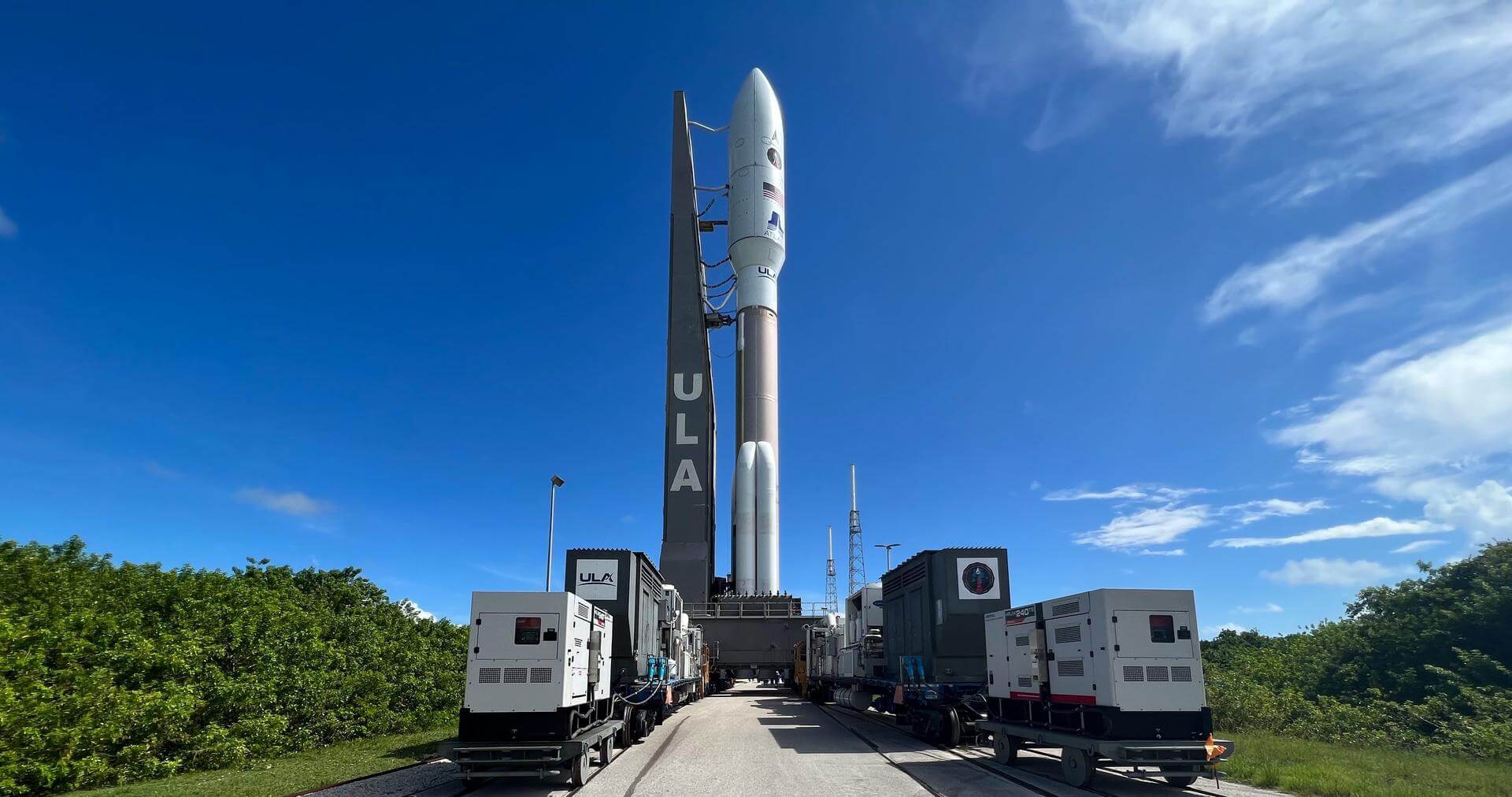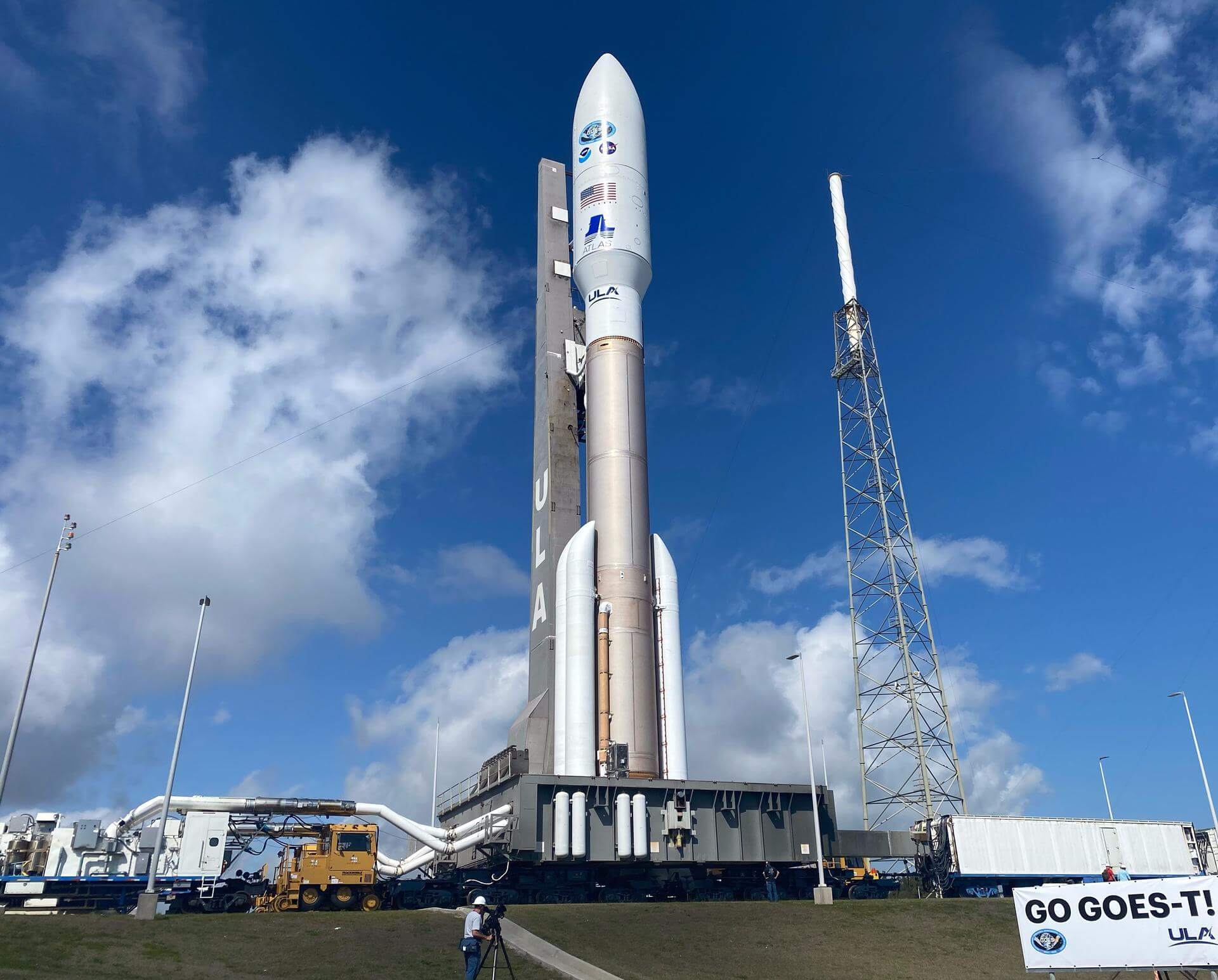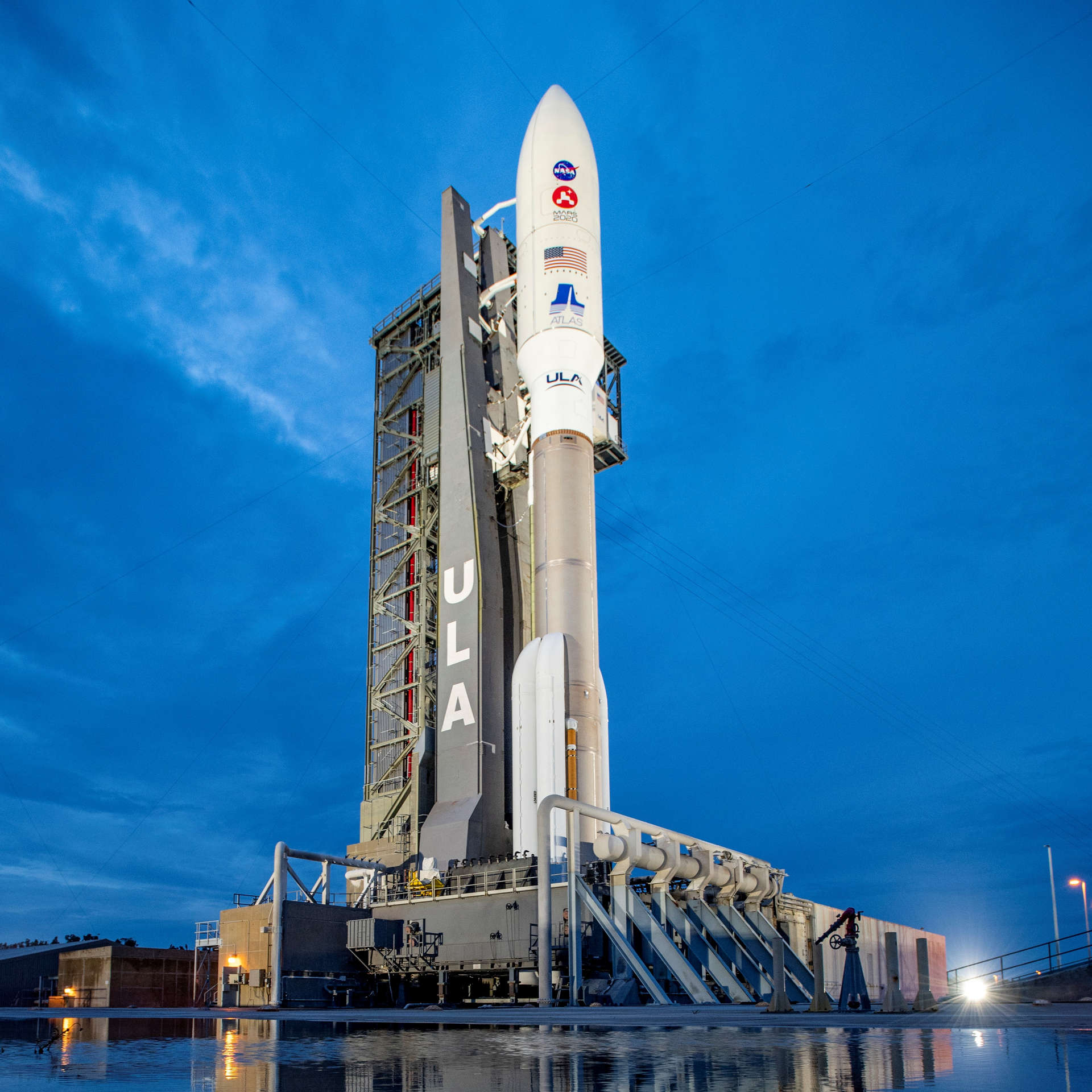
Atlas V 541
ActiveUnited Launch Alliance (ULA)
Nov. 26, 2011
Description
Atlas V with 5m Fairing, 4 SRB, 1 Centaur upper stage engine.
Specifications
-
Max Stage
2 -
Length
60.0 m -
Diameter
3.8 m -
Fairing Diameter
― -
Launch Mass
479.0 T -
Thrust
― -
Apogee (Sub-Orbital)
40000.0 km
Family
-
Name
Atlas V 541 -
Family
― -
Variant
541 -
Alias
― -
Full Name
Atlas V 541
Payload Capacity
-
Launch Cost
$145000000 -
Low Earth Orbit
17410.0 kg -
Geostationary Transfer
Orbit
8290.0 kg -
Direct Geostationary
3530.0 kg -
Sun-Synchronous Capacity
―
United Launch Alliance
Commercial
Interim CEO: John Elbon
ULA 2006United Launch Alliance (ULA) is a joint venture of Lockheed Martin Space Systems and Boeing Defense, Space & Security. ULA was formed in December 2006 by combining the teams at these companies which provide spacecraft launch services to the government of the United States. ULA launches from both coasts of the US. They launch their Atlas V vehicle from LC-41 in Cape Canaveral and LC-3E at Vandeberg. Their Delta IV launches from LC-37 at Cape Canaveral and LC-6 at Vandenberg.
Atlas V 541 | USSF-12
United Launch Alliance | United States of AmericaCape Canaveral SFS, FL, USA
July 1, 2022, 11:15 p.m.
Atlas V 541 | GOES-T
United Launch Alliance | United States of AmericaCape Canaveral SFS, FL, USA
March 1, 2022, 9:38 p.m.
Status: Launch Successful
Mission:
The Geostationary Operational Environmental Satellite T (GOES-T) is the third satellite in NOAA’s advanced GOES-R series. It is meant to operate as GOES West and work in tandem with GOES-16, which operates in the GOES East position
Geostationary Transfer OrbitAtlas V 541 | Mars 2020 (Perseverance rover & Ingenuity helicopter)
United Launch Alliance | United States of AmericaCape Canaveral SFS, FL, USA
July 30, 2020, 11:50 a.m.
Status: Launch Successful
Mission:
Atop this ULA Atlas V rocket will be Perseverance, a car-sized rover which will explore an ancient river delta on Mars. Armed with a suite of six scientific instruments, Perseverance will primarily hunt for clues to the planet's distant past, and hopefully uncover signs of ancient life and habitability. The rover also carries an experiment that'll convert carbon dioxide into oxygen, a box-sized helicopter named Ingenuity that'll demonstrate powered flight on Mars, and a system that enables the rover to leave behind samples for later retrieval and return to Earth during NASA and ESA's ambitious sample return mission later this decade.
Heliocentric N/AAtlas V 541 | GOES-S
United Launch Alliance | United States of AmericaCape Canaveral SFS, FL, USA
March 1, 2018, 10:02 p.m.
Status: Launch Successful
Mission:
The Geostationary Operational Environmental Satellite-S Series (GOES-S) is the second of the next generation of geostationary weather satellites. The four satellites of the series will provide advanced imaging with increased spatial resolution and faster coverage for more accurate forecasts, real-time mapping of lightning activity, and improved monitoring of solar activity. GOES-S will provide continuous imagery and atmospheric measurements of the Western Hemisphere. GOES-S will be the primary tool for the detection and tracking of hurricanes and severe weather. Once operational as GOES-17, the satellite wil replace GOES-15 satellite.
Geostationary Transfer Orbit #GOESSAtlas V 541 | NROL-42
United Launch Alliance | United States of AmericaVandenberg SFB, CA, USA
Sept. 24, 2017, 5:49 a.m.
Atlas V 541 | GOES-R
United Launch Alliance | United States of AmericaCape Canaveral SFS, FL, USA
Nov. 19, 2016, 11:42 p.m.
Status: Launch Successful
Mission:
The Geostationary Operational Environmental Satellite-R Series (GOES-R) is the next generation of geostationary weather satellites. The four satellites of the series will provide advanced imaging with increased spatial resolution and faster coverage for more accurate forecasts, real-time mapping of lightning activity, and improved monitoring of solar activity. GOES-R is the first satellite of the series, and it will provide continuous imagery and atmospheric measurements of Earth’s Western Hemisphere and space weather monitoring. It will be the primary tool for the detection and tracking of hurricanes and severe weather.
Geostationary Transfer OrbitAtlas V 541 | NROL-35 (USA-259)
United Launch Alliance | United States of AmericaVandenberg SFB, CA, USA
Dec. 13, 2014, 3:19 a.m.
Atlas V 541 | NROL-67 (USA-250)
United Launch Alliance | United States of AmericaCape Canaveral SFS, FL, USA
April 10, 2014, 5:45 p.m.
Atlas V 541 | MSL (Curiosity)
United Launch Alliance | United States of AmericaCape Canaveral SFS, FL, USA
Nov. 26, 2011, 3:02 p.m.
Status: Launch Successful
Mission:
The Mars Science Laboratory (MSL) mission, featuring the renowned Curiosity rover, was designed to assess the planet's past and present habitability. Equipped with an array of advanced scientific instruments, including a drill and a sample analysis unit, Curiosity explored the Gale Crater, a site believed to contain evidence of ancient Martian environments. It delivered groundbreaking discoveries, including the detection of organic molecules and the confirmation of an ancient, potentially habitable lake bed.
Mars OrbitLong March 3B/E
Fengyun-4C
Launch Complex 2 (LC-2) - Xichang Satellite Launch Center, People's Republic of ChinaChina's geostationary meteorological satellite program FY-4 (Feng Yun 4) is the second generation of chinese geostationary meteorological satellites.
Long March 8A
SatNet LEO Group 17
Commercial LC-1 - Wenchang Space Launch Site, People's Republic of ChinaA batch of 9 Low Earth Orbit communication satellites for the Chinese state owned SatNet constellation operated by the China Satellite Network Group.…
Soyuz 2.1a
Obzor-R No.1
43/4 (43R) - Plesetsk Cosmodrome, Russian FederationNote: Assignment of payloads to this launch is uncertain. The Russian Obzor-R satellite is a planned X-band radar earth observation satellite desi…
LVM-3 (GSLV Mk III)
BlueBird Block 2 #1
Satish Dhawan Space Centre Second Launch Pad - Satish Dhawan Space Centre, IndiaAST SpaceMobile’s Block 2 BlueBird satellites are designed to deliver up to 10 times the bandwidth capacity of the BlueBird Block 1 satellites, requi…
Long March 12A
Demo Flight
Long March 12A Pad - Jiuquan Satellite Launch Center, People's Republic of ChinaFirst test launch of CASC/SAST’s Long March 12A rocket, with a dummy payload. The rocket’s 1st stage attempted to land on a landing pad about 300 km …




